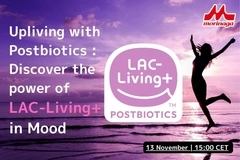Supercomputers power scientists to create gut microbiome maps for personalized nutrition
A team of US-based researchers is using supercomputers to unlock the secrets of gut health. By mapping the unique microorganisms in each person’s digestive system, the team says they can create personalized diets to improve and optimize overall health.
Nutrition Insight speaks with experts from the National Center for Supercomputing Applications (NCSA) and the University of Illinois Urbana-Champaign to learn about how they are using Illinois Computes and Jupyter Notebooks to create tools.
The researchers state that their goal is to create tools to investigate gut bacteria’s effects and diet’s role. They hope to help doctors design better nutrition plans and improve treatments using prebiotics and probiotics.
The project integrates metabolomic analyses, machine-learning tools and interactive dashboards to transform nutrition into a prescriptive science tailored to individual microbiome signatures.
The researchers are concerned that gut health is overlooked by heart and brain concerns when making nutrition and diet decisions, despite industry focus on probiotics and digestive aids. Since individual microbiomes are unique, it can make health diagnosis difficult. They underline almost 90% of all diseases are rooted in the gut health of the microbiome.
NCSA cites visionaries in human health from Hippocrates Ayurvedic leaders: “If you don’t take food as medicine, you may soon take medicine as food.”

NCSA says 90% of all diseases are rooted in the gut health of the microbiome.NCSA Genomics research scientists David Bianchi and Weihao Ge discuss gut issues and supercomputer solutions.
How could this research change the biotics and gut health industry?
Bianchi: Our research demonstrates how certain fibers can be processed with certain strains of gut bacteria and what kind of spectrum of compounds can be produced. It indicates a possible way to personalize the probiotic and prebiotic treatment of people lacking the ability to process a particular diet or need to intake more of some specific food. We are prototyping a dashboard for clinicians, connecting the bacteria sequencing data to dietary suggestions.
Ge: If people need to get treatment for severe gut microbiome issues, there are doubts about the efficacy of a capsule-based treatment. The current medical technique is to perform fecal transplants. To produce over-the-counter medications or supplements, the delivery method would need to be improved and tested to demonstrate how much pre/pro/synbiotics can still be active when they arrive in the gut. Perhaps lifestyle changes, such as eating more healthy fibers and exercising more can give a more gradual but more profound positive impact on the gut microbiome in conjunction with prescribed pre/pro/synbiotics.
How do researchers know if gut problems cause disease or just happen simultaneously?
Bianchi: Researchers examine the chemical compounds generated by the bacteria and determine if they promote biodiversity of the microbiome, strengthen the gut barrier or have any positive or negative effects, e.g., an anti-inflammatory role that might help enhance or detract from mental and physical health.
Ge: Researchers can also compare the gut microbiome and metabolism profiles of the patient and control group to identify certain co-occurrences and correlations of these profiles to diseases and then, with the aid of existing pathway databases, figure out what the mechanism of the diseases is. Afterward, the researchers will conduct experiments, such as antibiotic treatment, on animal models to replicate the diseases and confirm a causal effect.
How does using supercomputers make it easier to study gut health? NCSA research reveals how certain fibers can be processed with certain strains of gut bacteria and what kind of spectrum of compounds can be produced.Bianchi: Given the ever-expanding amount of omics data being collected in this area, as well as the continued development of machine-learning-based predictive models (e.g., AlphaFold) in the biophysical context, supercomputing can be helpful in many areas of this research, including but not limited to the following:
NCSA research reveals how certain fibers can be processed with certain strains of gut bacteria and what kind of spectrum of compounds can be produced.Bianchi: Given the ever-expanding amount of omics data being collected in this area, as well as the continued development of machine-learning-based predictive models (e.g., AlphaFold) in the biophysical context, supercomputing can be helpful in many areas of this research, including but not limited to the following:
- Genomic sequence assembly of the microbiome to identify which strains live in the gut.
- RNA sequence assembly to identify which genes are up or downregulated in a gut microbiome when certain diets are prescribed.
- Machine-learning tools to identify possible enzyme structures and functions also predict some possible binding sites that might interact with certain compounds.
- Simulations that demonstrate or predict how well the bacteria enzymes would bind and cleave the fiber molecule and generate desired or undesirable chemical compounds
- Network analysis of more sophisticated pathway interactive networks
How can these diet plans work for people with different genes and lifestyles?
Ge: Each individual has a unique gut microbiome composition that often varies greatly depending on lifestyle, climate and geographic location, among other things. Our platform seeks to characterize the individual’s microbiome so that a personalized nutrition plan (based on their genetics — expression of relevant genes — and lifestyle) may be developed.
Are there any risks or concerns with creating a database of gut bacteria?
Bianchi: This is probably less risky and has fewer privacy concerns than direct human genomic or diagnostic case databases, which are also widely used. The gut bacteria-metabolite panel-disease association database is less identifiable.
People have unique gut microbiome compositions that vary depending on lifestyle, climate and geographic location.Moreover, the gut microbiome is relatively substantially alterable over time through diet change, exercising and other lifestyle adjustments. Therefore, it is not a fingerprint of a specific human identity.
Recent industry developments
Nutrition Insight met with biotic producers FrieslandCampina Ingredients and Iprona to discuss their latest biotic solutions. Meanwhile, AB-Biotics promotes a targeted approach to biotic formulations.
In previous research, scientists at the University of Copenhagen, Denmark, used a wireless motility capsule to reveal how changes in the gut environment impact bacteria composition and activity. The team believes the findings may help explain people’s gut microbial composition and metabolism differences.
Other scientists have developed a multiple organ-on-chip system to help study how neurotoxins move from the gut to the brain.
Meanwhile, Morinaga Milk published a Technical Paper on the post-pandemic impact on gut microbiota, focusing on human-residential Bifidobacteria probiotics.















